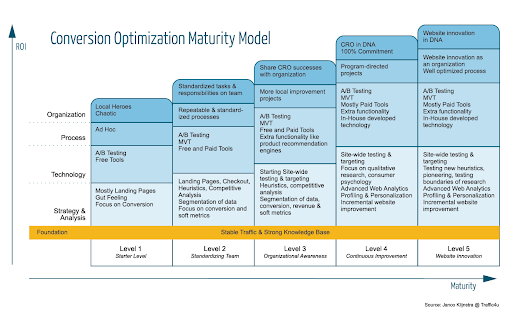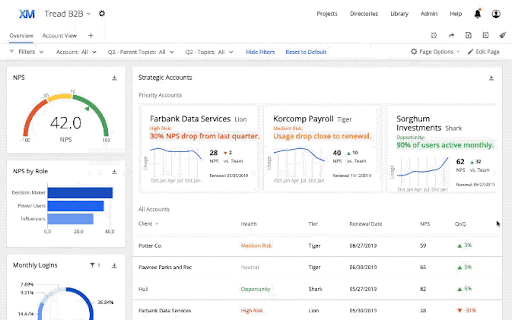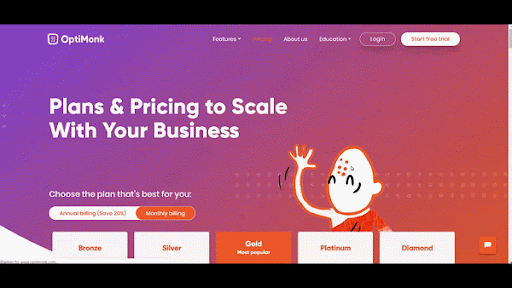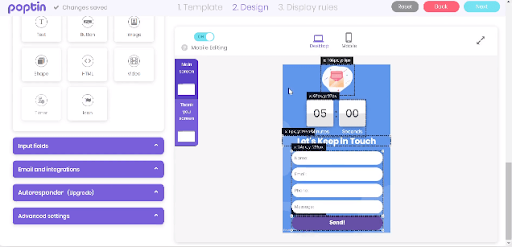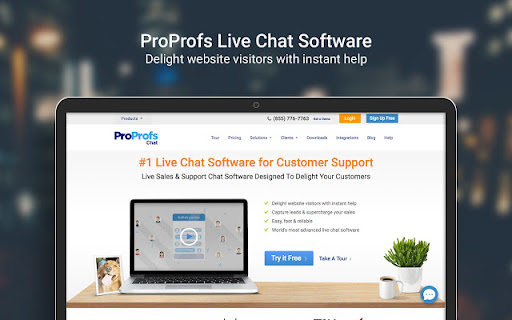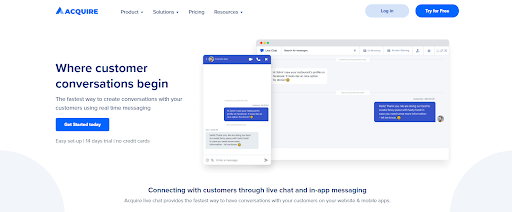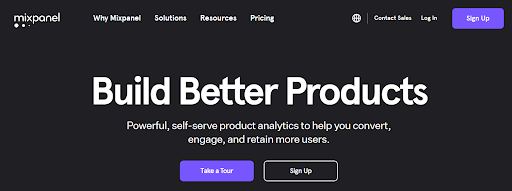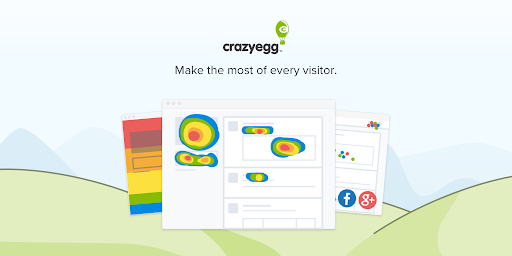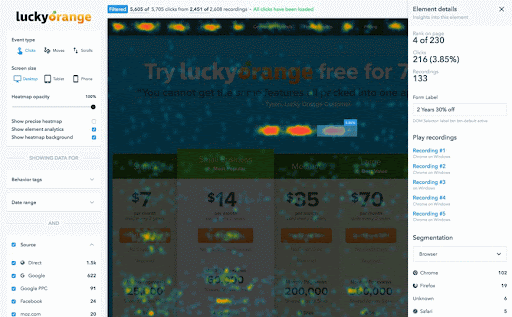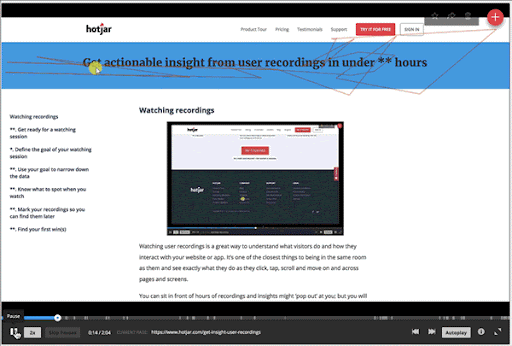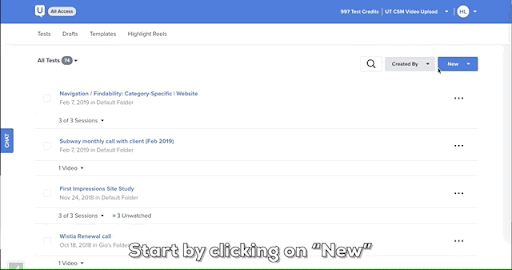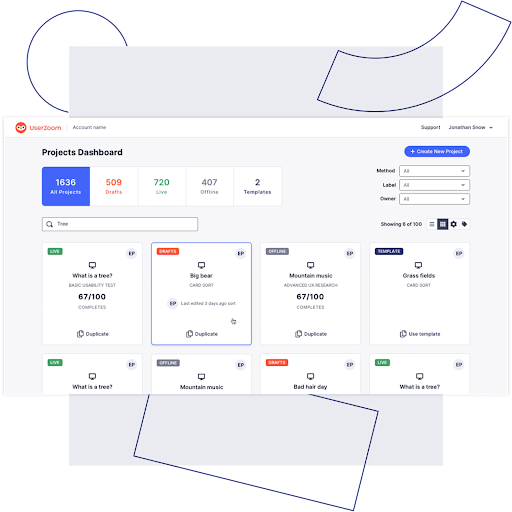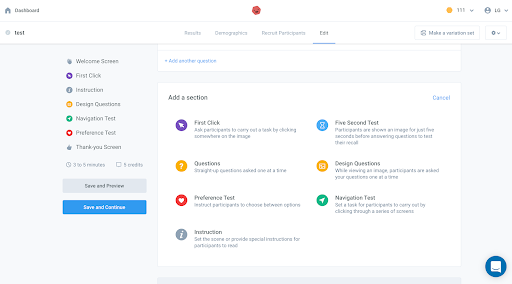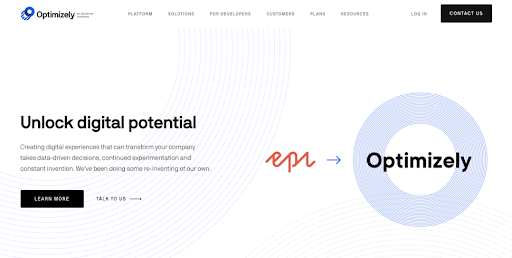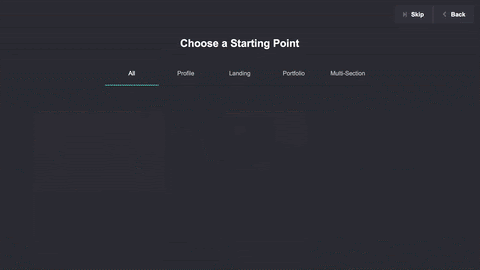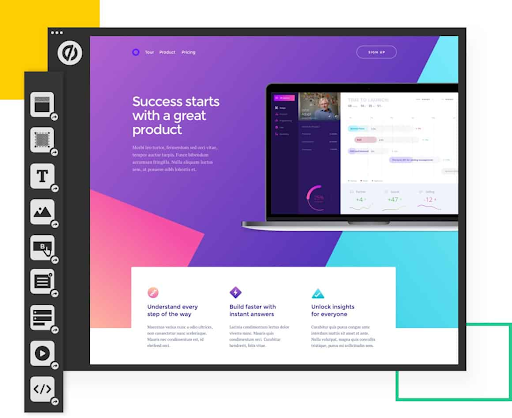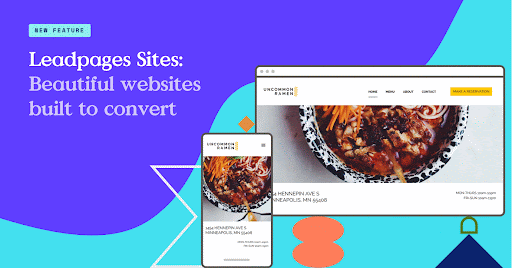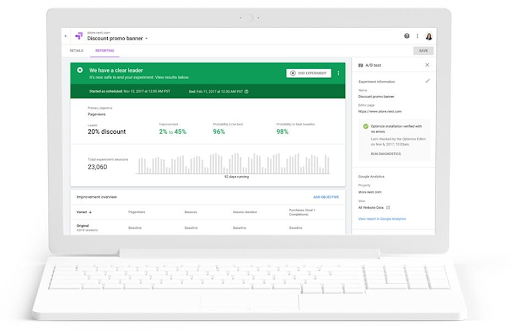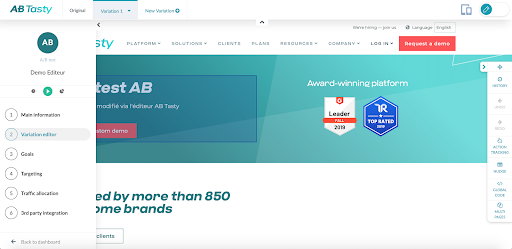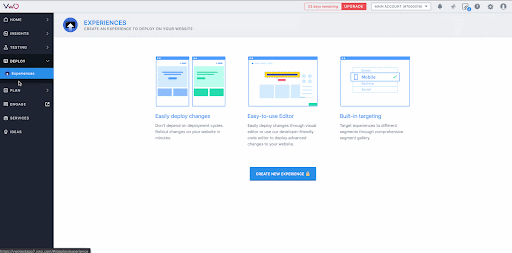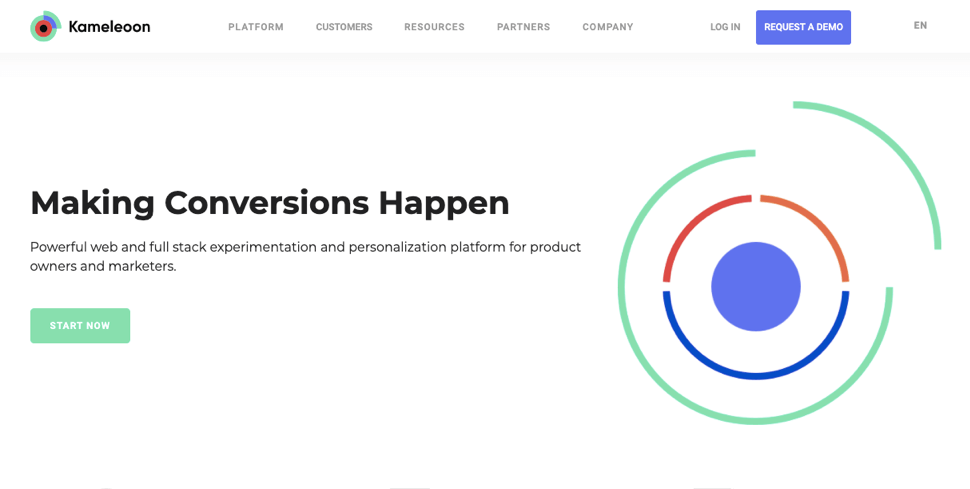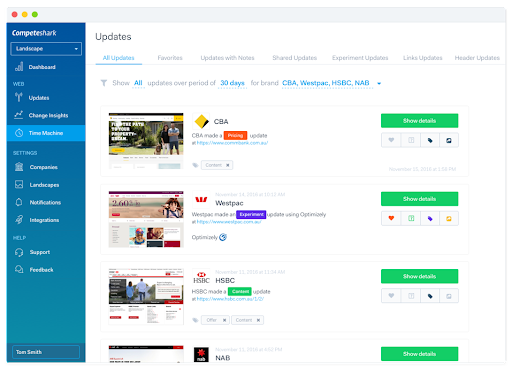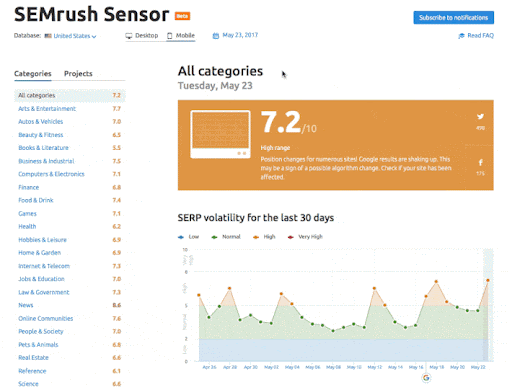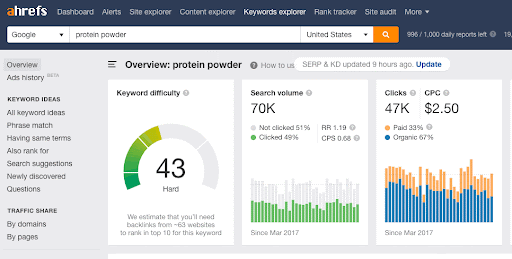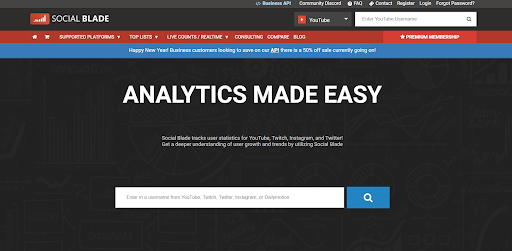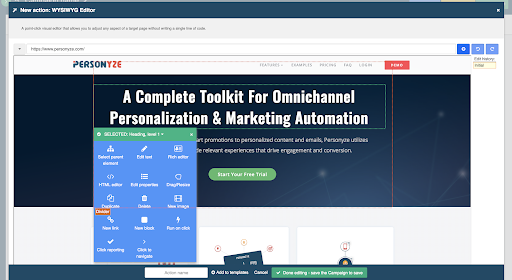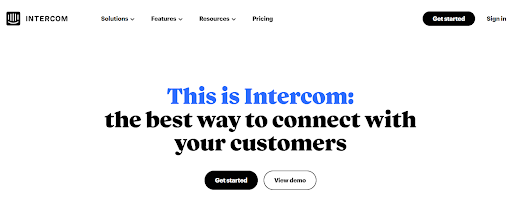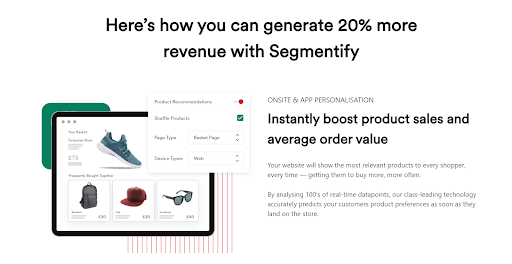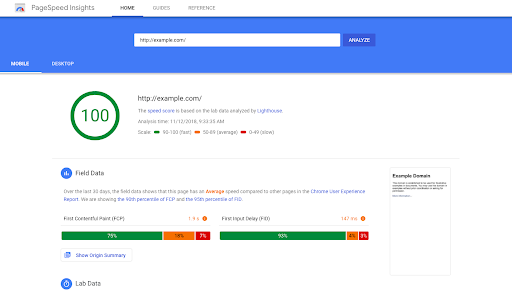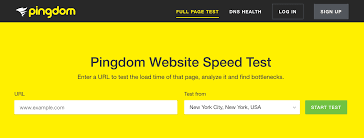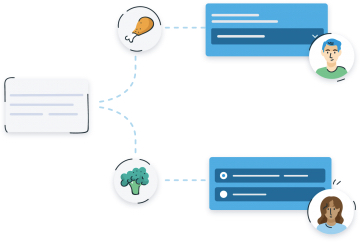40+ Best CRO Tools You Shouldn’t Miss in 2023
Conversion rate optimization or CRO tools come in many shapes and sizes. But it can be a daunting task to find the right ones that not only fit your current needs but also provide scaling possibilities for the future.
So, why bother? Why is the conversion rate so crucial for businesses?
Because at the end of the day, it’s all about building the best possible customer experience and earning revenue. The conversion rate directly reflects the sales and profit of any business. So, the higher the number of conversions, the higher the sales, ergo higher ROI.
But what type of CRO tools do you need?
CRO is not only valid for on-site visitors, but it is also necessary for every avenue that you use to connect with the customers - email marketing, paid ads, SEO, Blogs, landing pages, and more. Plus, optimization is also essential to improve user experience across all the touchpoints.
It involves attracting the visitors, engaging them at various points along their journey, providing what they are looking for, addressing their issues, and pushing them along the conversion funnel.
So the tools you need will depend on the aspect of the customers’ journey you are trying to optimize.
Like we said before, a daunting task at hand. But some best conversion rate optimization tools will always make it easy for you.
That’s why we have a detailed list of over 40 top CRO tools right here.
But wait!
Let’s take a much-needed detour first to prepare a checklist for measuring the potential and performance of the tools.
Things to consider before choosing a CRO tool
a. GDPR compliance
User data protection should always be at the forefront while making any decisions that involve user data.
The CRO process requires users’ data at every step (so will the CRO tools), making it all the more imperative for businesses to choose the conversion rate optimization tools that are GDPR compliant. Make it a mandate rather than an option.
b. Integrations
Lack of integration between tools when you are using a combination of them will lead to an untoward scenario which no business looks forward to - data silos. For your CRO efforts to go smooth and effective, choose tools offering the most and relevant integrations.
c. Which is more efficient - Suite or Best of the breed?
Make your decision between a suite of tools or best of the breed. For some organizations, using a tool with all the features required for CRO might work fine. For others, compiling a set of conversion rate optimization tools where each tool offers expertise in one thing may be the ideal choice.
d. Maturity level of your CRO process
Companies often get lost in selecting the hardcore feature-rich tools that they often push their own ability or CRO maturity level into oblivion. For your efforts to bear fruits, you must choose resources matching your ability to optimize them.
Tip: Here are some other points to look after while choosing a CRO tool or a combination that suits your needs. A tool should:
- Support multiple goals tracking.
- Be able to test several pages at once.
- Have WYSIWYG functionality, code view, and customized reporting for specific goal metrics.
- Support personalization and segmentation when it comes to testing pages targeting selected groups.
- Be capable of integrating with other lead capturing, analytics, and other tools.
- Run A/A test before trying A/B testing with the selected tool.
So, without any further ado, we present to you the top 38 CRO tools you can leverage at different stages in the CRO process to cultivate the best results from your endeavors.
40+ CRO tools for your business for 2023
Customer Feedback & Survey Tools
There’s no one more suited than the customers to tell about what needs to be changed or improved on your website or products. And that’s why customer feedback & survey tools form an integral part of your CRO tools stack to help you pinpoint issues, map preferences, ask for suggestions, and more.
So, here’s our list of the three best tools for this purpose:
1. Qualaroo
Best For: In-context surveys, advanced audience targeting, AI-based feedback analysis
Suited for: Small to big businesses
Supports 3rd party integration: Yes
Offering over 6+ survey deployment channels, Qualaroo is an advanced user research & conversion optimization tool. It lets you collect in-depth insights across various touchpoints using its targeted surveys called Nudges™.
The tool can handle survey creation, data collection, and feedback analysis in one place to make your CRO efforts easier. It lets you ask the right questions at the right time.
Companies such as Udemy, LinkedIn, Hootsuite, eBay have used this survey maker on their website.
Here's why Qualaroo is one of the top CRO tools:
- Use inbuilt professional templates to create any survey type in minutes.
- Provides 12+ question types such as open-ended, closed-ended, dichotomous, Likert scale, NPS, emoji, and more.
- Use branching logic & automatic language translations to make surveys more relevant.
- Use advanced audience targeting options to show the survey to the right people at the right time.
- Collect and use the feedback for product, website, and other optimization strategies.
- Helps you analyze feedback visually using the sentiment analysis & text analytics engine.
- Integrate with tools like HubSpot, Mailchimp, Marketo, Eloqua, Zapier.
Pros
- Qualaroo only takes a few minutes to set up and start collecting feedback. The learning curve is very shallow.
- One of the best tools for NPS surveys. Provides inbuilt NPS score tracker, time chart, and feedback analysis engine.
Cons
- The reporting can be improved further with more filters and export options.
- Also, it would be great if the dashboard had a bulk action button.
Price/Plan
Starts from $80/ month, billed annually
2. ProProfs Survey Maker
Best For: Interactive scored surveys, multi-channel deployment, feedback sidebar
Suitable For: Small to large enterprises
Supports 3rd party integration: Yes
ProProfs Survey Maker is a popular tool known for its multiple types of surveys. It lets you ask any question, any way you want. To only name a handful, clients such as Intel, Dell, Cisco, Gartner, Toyota, and Sony have created 50,000+ surveys using this tool with over 4 million respondents.
The tool’s interface is easy to navigate and lets you create multiple surveys with 1,000,000 business goal-oriented questions to collect unbiased feedback.
Here's why Survey Maker features in the list of top CRO tools:
- Create NPS surveys, quizzes, polls, sidebar surveys, in-app surveys, and pop-up surveys.
- Use the drag-&-drop editor design surveys in minutes.
- Supports theme customization and white labeling.
- Helps you utilize skip logic, branching logic, and scores in the surveys.
- You can create web forms & embed surveys directly into your website.
- Enables you to share the survey on several platforms and via multiple channels.
- Offer seamless integration with 30+ tools.
Pros
- Offers a massive library of 100+ ready-to-use templates and 100k survey questions.
- You can even create scored surveys to make them more engaging.
Cons
- Needs more options for customizing the template design and colors.
Price
Starts from $50 per month.
3. Qualtrics
Best For: NPS surveys, experience personalization, brand tracking
Suitable For: Medium to big enterprises
Supports 3rd party integration: Yes
There can be no discussion about the best CRO tools without mentioning Qualtrics. It's another all-in-one survey software that comes with impressive features and functionalities.
It lets you create custom surveys with a drag-and-drop survey editor and use predictive intelligence to analyze feedback data. You can embed Qualtrics surveys in mobile apps, websites, and chatbots.
Why is Qualtrics one of the leading conversion optimization tools?
- Pre-built survey templates with 100+ question types to create targeted surveys.
- The ExpertReview feature helps analyze every question and gives survey design recommendations in real-time.
- Leverage predictive analytics and statistical analysis to unfold essential data insights.
- You can represent reports in 30 different graph types and share the reports in multiple formats, such as Word, PowerPoint, SPSS, CSV, and PDF.
- Easy integration with other platforms like Marketo, Salesforce, Adobe, and more.
Pros
- The tool has a state-of-the-art analytics engine that offers pre-launch survey testing, an inbuilt survey responder, and automatic ticket creation, among other features.
- Provides inbuilt predictive churn analysis based to aid in CX personalization and optimization.
Cons
- The WYSIWYG editor may use some upgrades. Sometimes, the final look of the survey isn't what it was intended to be.
- Customization options are very basic.
Price
Available on request
Pop-ups & Overlays CRO Tools
How do pop-up overlays help in conversion rate optimization? By engaging people at the right moment along their journey. These CRO tools are essentially lightboxes & windows displayed on the webpage screen for various purposes such as traffic conversion, email collection, promotional marketing, etc.
And these are our top picks for this category:
4. Picreel
Best For: Timed pop-up overlays, mobile responsive pop-ups
Suitable For: Small to medium-sized industries
Supports 3rd party integration: Yes
Picreel is a fantastic cloud-based tool that tracks the visitors' behavior and displays pop-ups at the precise moment to move them along the conversion funnel. From retargeting exiting customers and collecting email addresses for marketing campaigns to redirecting visitors to relevant pages with a discount, Picreel lets you do all this and more.
Why did we choose Picreel as a leading pop-up CRO tool:
- Facilitates a 10-second installation for easy set-up.
- Offers a library of professionally designed 100+ pop-up templates that offer high conversion rates.
- Offers deals & offers overlays, lead form overlays for retargeting, and redirect links overlays.
- Helps in advanced targeting based on onsite content, referral source, returning or new visitor, and more.
- You can add interactive elements such as timers and CTA buttons to your pop-up overlays.
- Works well on smartphones, tablets, and laptops.
- Features integrations like One-click and Zapier.
Pros
- Apart from in-built templates, you can customize them using the program & CSS editor. It makes customization easier.
- The targeting options are more in-depth than other similar tools we have used.
Cons
- The analytics dashboard for A/B testing needs improvement to show more data about the results.
Price
Starts from $14 per month
5. Optimonk
Best For: Spin wheel pop-ups, onsite Nanobar & sidebar
Suitable For: Small to big businesses
Supports 3rd party integration: Yes
Definitely, one of the top choices of marketers for onsite retargeting, Optimonk works incredibly in turning website traffic into sales by grabbing visitors' attention. Organizations use the tool for creating email lists. You can promote special offers on your services or products. For example, e-Commerce websites use this strategy to reduce cart abandonment.
Why does Optimonk make the list of best CRO tools?
- Offers multiple types of onsite messages such as sidebars, nano bars, pop-ups, lucky wheel pop-ups, and interstitials with drag and drop editor.
- You get 50+ templates that include nano bars, pop-ups, and sidebars.
- Facilitates pop-up A/B testing.
- Helps create customer emailing lists (subscribers other social media leads).
- Supports social sharing.
- Integrates with other tools like Salesforce, Marketo, Moosend, etc.
Pros
- Excellent tool to gamify your pop-up overlays to increase lead generation and conversions.
- The in-depth targeting options allow for niche audience targeting.
Cons
- The analytics options could be improved to show more details about the pop-ups' performance and visitor interactions.
- You need to design two separate campaigns to test language variants for the same pop-up. It would be good if you could do it in the same campaign.
Price
Starts from $24/ month, billed annually
6. Poptin
Best For: Website pop-ups, embedded web forms
Suitable For: Small to big businesses
Supports 3rd party integration: Yes
Like other pop-ups and overlays tools, Poptin also observes the visitors' behavior on the website to show them relevant content to increase engagement and conversion rate. Its exit-intent pop-up is easy to set up within 2 minutes. Plus, you can collect targeted feedback from visitors on your blogs and web pages with embedded forms.
Here are the features that make Poptin a leading CRO tool:
- Lets you add dynamic tags to pop-ups.
- Has features for exit-intent targeting and A/B testing.
- You can set it up to send automated email responses after signup.
- Integrates with Integromat to connect it with pop-ups and forms.
- Offers advanced targeting based on operating systems, browser, mobile, and desktop.
- Create gated pop-ups to show discount codes and collect visitors' contact information.
- Trigger pop-ups if the visitors are inactive on the website to grab their attention and improve engagement. You can also use it to recover abandoned visitors and capture more leads and sales.
Pros
- The interface is much cleaner, and the WYSIWYG editor makes customization very easy.
- The price is very competitive when we look at other similar tools.
Cons
- From our experience with it, a few text editing features and design elements require a little revamp to make it more user-friendly.
Price
Paid plans start at $20 per month, billed annually
Live Chat Tools
Live chat software is not only suitable for real-time support but also works as an excellent conversion optimizer tool for your website and app. Plus, many tools also offer chatbots that can automatically initiate a chat with the visitors to resolve queries, redirect them to relevant pages and create follow-up tickets if necessary.
And here are the top live chat tools for our CRO list to get you started right away:
7. ProProfs Chat
Best For: Website live chat widget, AI-based conversational chatbots
Suitable For: Small to big businesses
Supports 3rd party integration: Yes
ProProfs Chat is an easy-to-use and feature-rich tool that offers you everything you want in a live chat support tool. The tool helps personalize customer journeys by engaging website visitors to understand their intent and preferences.
It offers 50+ integrations, including Microsoft Dynamics, Salesforce, etc., to help you store leads for a streamlined sales process. With such features, it assists businesses in closing deals faster and improves customer support quality.
What's more, the native integration with the AI-based chatbot makes it possible to assist visitors during odd hours.
What makes ProPros Chat an ideal conversion rate optimization software?
- Assists in easy chat transfer.
- Add a link to the CTAs or self-help articles.
- Create customer conversation flows to set individual chat routing.
- Monitor visitor behavior on key landing pages in real-time.
- Add a pre-chat form to collect visitors' data for your mail campaign.
- Store and use canned responses for real-time reply and assistance.
- Access reporting to view chat summary report, operator performance report, customer rating tracking, supervisor dashboard, and other stats.
Pros
- You can use the pop-up widget to broadcast important announcements to visitors like upcoming deals and updates.
- The tool has a very in-depth and detailed reporting section. You can track agents' timesheets and the effectiveness of announcements, among other nuanced metrics.
Cons
- The inbuilt chatbot templates are very limited.
- Needs chatbot widget templates and more options to customize the widget.
Price/Plan
Starts at $10/ month, billed annually
8. Acquire.io
Best For: Website & in-app live chat, conversational chatbot
Suitable For: Small to big businesses
Supports 3rd party integration: Yes
Acquire.io is another software that easily provides all the features you want in a live chat tool. It also features a web chat interface, and you can add self-help guides, blog links, other rich media like videos, files, and more for customers and boost sales conversations.
Here's why Acquire.io is one of the best CRO tools:
- Offers features like screen sharing, co-browse, make audio or video calls from the chat only.
- Assists with the translation of 100 languages to motivate you to go global.
- Customize live chat branding as per your business.
- Promotes easy work automation.
- Use a specific chat interface for specific segments.
- Helps you track customer history and measure engagement, such as the busiest time, popular demographics, top-performing agents, to name a few.
Pros
- We like the real-time visitor tracking feature.
- Ther advanced targeting helps to engage visitors at the precise moment to optimize conversions.
Cons
- The pricing structure can be a little steep compared to other similar tools.
- The workforce management dashboard can be improved for better control and data distribution.
Price/Plan
Available on request
CRO Tools for Data Analysis
Qualitative data is as crucial as quantitative data and statistics to understand the reality of how a business is performing. There are a plethora of conversion optimization tools that let you track the visitors' behavior through visual mediums, such as heatmaps and screen recording.
You can then combine this data with website analytics to bridge the actual and expected customer experience gap.
That's why they form an integral part of any CRO list, and here are some of the most popular tools for this category:
9. Google Analytics
Best For: Tracking website metrics & visit data
Suitable For: Small to big companies
Supports 3rd party integration: Yes
In the dark ages, every company had its own internal analysis tools. So, the performance indicators were fragmented, and worst of all, cross-platform comparison was a headache for companies.
But it all changed with web Analytics tools, and Google analytics is still leading the race as the most popular website data analysis tool globally.
Google Analytics lets you see your website's health and performance with in-depth tracking and reporting dashboards.
You can monitor metrics like unique visits, page bounce rate, page value, goal completion, traffic sources, channels, key demographics, and more.
Here's why GA is one of the popular data analysis & CRO tools:
- You can track campaigns to understand what works for your website by adding parameters to the URL.
- Track conversion, retention, and bounce rate to re-strategize your marketing efforts by analyzing on-site user activity and behavior.
- Get in-depth and segregated demographics data to help you better understand your user base with the help of visuals and reports.
- Flow visualization graphics enable you to understand how users move on your website and explore it.
- Create custom reports with the selected data to fit your purpose.
Pros
- It's a no-brainer for every business that hosts a website.
- It has standardized metrics for better benchmarking and competitive analysis.
- Google analytics helps to connect your website with your goals and KPIs.
- It’s completely free.
Cons
- The initial setup requires technical knowledge, and we advise you to bring in a professional to set it up for you. It gets easier with time.
- The whole system can be made more intuitive and user-friendly for new users.
Price
Free
10. Full Story
Best For: Website analytics, behavior analysis, heatmaps, session replays
Suitable For: Small to big businesses
Supports 3rd party integration: Yes
Full Story is a digital experience intelligence platform that fetches nuanced visitor interactions across your website and app. It provides more insights than website analytics to give you a complete picture of users' experience. From real-time website user insights to issues and bugs, the tool makes it possible to identify the friction points to aid your optimization strategies.
Why is Full Story your one-stop analytical and CRO tool?
- Track page clicks, scrolls, page views, swipes, form-fills, and more with a simple code snippet.
- Enhance your website and mobile app's performance with session replays, bugs and issues reports, and user engagement statistics.
- Monitor and log anonymous users' previous visits and behavior across different browsers and devices.
- Provides behavioral tools like heatmaps, session replays, scroll maps, and click data to visualize user journeys.
- Use session replays to pinpoint issues, script errors, slow pages, workflows, and bugs.
- Run page speed tests and network analysis tests to optimize your pages.
- Supports integration with Tray.io, Zapier, and others.
Pros
- Records every user interaction so you can visualize the journey entirely.
- Tagless monitoring makes it more efficient than other analytical tools.
- Combines both behavioral tracking and analytical data in the same tool.
Cons
- Custom events and triggers need to be more customizable.
Price
Available on request
11. Adobe Analytics
Best For: Customer behavior intelligence, conversion funnel analysis
Suitable For: Small to big businesses
Supports 3rd party integration: Yes
Adobe Analytics is an industry leader in real-time analytics that combines website data and segmentation to help you track goals across various marketing channels. To empower key decision processes, you can monitor your most valuable customers, best-performing channels, and other metrics.
Here's why Adobe Analytics is an industry leader as a CRO tool:
- Capture data across multiple channels like web, app, email, web-Kiosk, campaigns, and client-server applications.
- Set up business goals and KPIs to track the success of your campaigns across various touchpoints.
- Use advanced segmentation to uncover each segment's key characteristics that drive your set metrics and dimensions.
- Integrate customer data from your CRM tool to add new dimensions to your segments.
- Supports ad hoc analysis, flow analysis, and cohort analysis.
- Leverage machine learning to dig through customer intelligence data to automatically detect anomalies, interaction patterns, sudden trend changes, and more.
- Import audience data like demographic, psychographic, and CRM data from other tools to Adobe Analytics workflows.
Pros
- You can analyze the clickstream data of full conversion funnels for different segments.
- The interface is user-friendly, and you can create custom reports based on multiple variables.
- You can also add and track custom traffic variables to suit your needs.
Cons
- Freeform tables for multiple UX can be tricky to navigate if several columns are present in the data.
- There is no autosave feature in workspaces.
Price
Available on request
12. Mixpanel
Best For: Product analytics, behavioral analysis
Suitable For: Small to big businesses
Supports 3rd party integration: Yes
Mixpanel is a product analytics tool that provides rich insights about who uses your digital product and how they interact with it. You can use interactive dashboards to get a detailed view of user-based events in your products.
Features that make MixPanel your go-to product analysis and CRO tool:
- Build funnels and analyze each stage using multiple attributes or behavior metrics to see which users convert best.
- View how new features and updates affect your conversion funnel for different segments.
- Segment every event and user property to analyze user behaviors and how they affect conversions.
- Use interactive dashboards and set alerts for any sudden spikes, unexpected behavioral patterns, and more.
- Identify user flows to find friction points across the users' journey.
- Run detailed retention analysis to monitor customer churn, find segments with the highest retention, and more.
- Supports multiple integration options like Airship, AWS, Alooma, and more.
Pros
- The user flows and funnel analysis provide insights to optimize your product for multiple segments.
- In-depth segmentation options to help you target very specific data sets.
Cons
- The event tracking dashboard UI can be improved further to make navigation easier.
Price
Paid plans start at $25/month
13. Heap
Best For: Event visualization, behavioral data analysis
Suitable For: Small to Big companies
Supports 3rd party integration: Yes
A little different from Google Analytics, Heap is an analytical tool that automatically tracks user interaction, such as clicks on CTAs, forms filled and submitted, etc., on both websites and mobile apps from the time it is installed.
It targets both platforms to give a 360-degree view of the products or services you can make strategic decisions.
Why Heap is a top choice as a conversion rate optimizer:
- Offers a simple data analytics dashboard.
- Tracks website traffic without creating trigger events.
- Helps in tracking crucial metrics such as retention rate, bounce rate, return rate, exit tracking, and more.
- You can analyze website traffic with respect to the sales funnel.
- Tracks average session length to measure customer engagement.
- Supports retroactive reporting where it can predict specific trends based on the current data.
- Tracks user behavior and traffic for mobile apps.
- You can create custom reports to suit your purpose.
Pros
- It captures more nuanced data than GA, like clicks, form submissions, field changes, and more.
- You can add & track custom behavior events.
- Track the behavioral history across multiple devices and channels for any desired length of time.
Cons
- Like GA, the initial setup and HTML tagging may be difficult for new users.
- UX can be improved further. For example, it feels clunky while adding definitions on the visualizer and definitions page.
Price
Available on request
14. Crazyegg
Best For: Heatmaps, session recording, clickstream data, A/B testing
Suitable For: Small to big enterprises
Supports 3rd party integration: Yes
Crazyegg started as a heat mapping tool but has become a multi-purpose tool. You can use it to track behavioral data to visualize how visitors interact with your website.
It comes with features, such as confetti snapshots, scrollmaps, and clicks reports to help businesses visualize the customers' journey.
What makes CrazyEgg a perfect CRO tool for your business?
- Track visitors' movement using different techniques like Heatmap, Confetti, Scrollmap, Overlay, and List.
- Use session recording to see how customers navigate your website. You can see exactly where the user's mouse and fingers go frequently, what places in the website are mostly avoided, and how long they remain on your website.
- The tool also provides A/B testing functionality with a quick setup for split testing. It does not require any coding to get started.
- Integrate with other tools like Google Tag Manager, Joomla, Magento, Shopify, Squarespace, Wix, and WordPress.
Pros
- The single software packs various testing and behavioral data tools under one roof making data analysis simpler.
- It does not slow your website.
Cons
- The pricing structure only includes yearly billed plans. It would be great to have month-to-month pricing.
- It lacks funnel and form analysis to link with the recordings and heatmaps.
Price
Starts from $24 per month. 30-day trial available.
15. LuckyOrange
Best For: Heatmaps, session replays, form analysis, surveys
Suitable For: Small to big businesses
Supports 3rd party integration: Yes
LuckyOrange is another conversion optimizer tool that leverages different features to help understand on-site user behavior and actions. It records user sessions for better and unbiased analysis.
On the LuckyOrange dashboard, you can view the active number of users on the website, monitor traffic variations, identify the channels bringing in more traffic, and so on.
Here's why Lucky Orange is a top data analysis tool:
- This conversion rate optimization software lets you see historical statistics to gauge what marketing channels, keywords, referrals, tweets, etc., have brought traffic to your website.
- Optimizes behavior tags in the analysis.
- Offers session recordings and lets you segment for better insights.
- Comes with the dynamic heatmaps feature to unfold the quality of interaction between you and the visitors.
- Provides the live chat widget for your website with features like canned responses, auto invites, multiple operators, and more.
Pros
- You can create custom dashboards in the tool. It reduces the need to filter the data each time.
- You can fetch and compare the data from different tools in one place.
Cons
- It does not store the data for more than 30 days.
Price
Starts from $9/ month, billed annually
16. Hotjar
Best For: Heatmaps, session replays, surveys,
Suitable For: Small to big business
Supports 3rd party integration: Yes
A very close alternative to CrazyEgg, Hotjar is an advanced website optimization tool for behavioral data analysis.
It's an effective conversion optimization tool that can help you visualize user behavior and collect feedback using targeted surveys.
How is Hotjar one of the best CRO tools?
- Its heatmap feature analyzes user behavior on three metrics - scroll, click and move.
- It also offers the necessary screen recording feature to analyze user behavior whenever you want.
- Detailed analytics reports by Hotjar provide businesses a chance to identify their weak points and improve them.
- You can also conduct NPS surveys with Hotjar.
- The instant visual feedback lets visitors share their thoughts and experience within seconds, with one click.
- You can customize its feedback widget in terms of language, position, and colors.
Pros
- One of the biggest advantages is multiple CRO tools at your fingertips. It helps to keep all the data in one place.
- We found the filtering and reporting options to be very well defined.
- You can easily segment thousands of interactions in heatmaps and recordings.
Cons
- The theme customization options for surveys can be improved to help them blend with the website more. Right now, they feel like a 3rd party integration.
- The heatmaps of pages with big menus feel clunky.
Price
Starts from $39 per month. Free version available
CRO Tools for User Testing
Usability testing is a great way to test your prototypes, pre-launch product, and new product updates. And user testing tools let you test the UI/UX with moderated and remote testing to make the changes and optimize the product.
Some of these tools also offer a dedicated pool of volunteers to choose from in your tests.
A great UI/UX design is key to offering a remarkable user experience that ultimately results in more conversions. So, here is the list of the best user testing tools for you:
17. UserTesting
Best For: Remote testing, tester panel
Suitable For: Small to big companies
Supports 3rd party integration: Yes
A popular conversion rate optimizer tool, UserTesting helps scale across all product areas, designing, UI/UX, and marketing by closing the “empathy gap.”
You can view and hear the people as they complete the given tasks on the platform to test your product to collect real-time feedback.
What makes UserTesting a leading usability testing & CRO tool?
- Test your products, apps, processes, designs, concepts, and more with in-depth demographics settings to find the right target audience.
- The platform also lets you engage with its audience to test specific features, website usability, and so on.
- View and record videos while people perform the test.
- Assists you by providing instant feedback on any stage like Discover, Design, Build, Launch, and Iterate.
- Measures how your ads, content, messages, and other campaigns perform on multiple channels using the tool.
- You can survey visitors with NPS and other questions while tracking time on task.
- Quickly optimize mobile experience with its mobile testing feature.
- Offers impressive integrations like Adobe XD, Slack, Trello, and Jira.
Pros
- The video editor is very flexible and intuitive in terms of features.
- You can edit and combine the interview videos in minutes to analyze the user feedback.
- Constant updates. They keep on updating the platform to make it more user-friendly.
Cons
- The app needs to be optimized further to provide a better tester experience. Sometimes, the instruction box obstructs the users from interacting with the interface.
- Sentiment analysis can be improved for better parsing of free texts.
Price
Available on request.
18. UserZoom
Best For: UX testing, surveys, card sorting, tree testing
Suitable For: Small to big business
Supports 3rd party integration: Yes
UserZoom is a CRO tool that supports multiple types of usability testing methods. You can run remote tests to collect video and verbal feedback about product usage to facilitate user research at every stage.
Here's why we put UserZoom among the best usability testing CRO tools:
- Supports moderated and unmoderated remote testing for your products & designs.
- Provides a suite of features imperative for efficient user experience research, such as Usability Testing, Interviews, Surveys, Card sorting, Tree testing, Click testing, Participant recruitment, and Live intercept.
- You can collect video and verbal feedback on your tests.
- Provides the option to invite stakeholders to view the testers.
- You can edit the video, add time-stamps, make notes and share the video feedback to make analysis easier.
- Integrates with your tools like Dropbox, Delighted AdobeXD, and more.
Pros
- Eliminates the need for separate tools for design & test prototypes.
- Offers more usability testing methods than other similar tools.
- UserZoom Go is perfect for moderated testing. We liked the feature of a virtual observation room for stakeholders.
Cons
- The platform may take some time to learn for new users because of its plethora of nuanced features.
- The price may become a hurdle for some businesses.
Price
Available on request. For UserZoom Go, it's $250 per month.
19. UsabilityHub
Best For: Usability research, five-second test, surveys, first click test
Suitable For: Medium to big businesses
Supports 3rd party integration: Yes
One of the best CRO tools for user testing, UsabilityHub offers a combination of methodologies known to gauge user intent, feedback, preferences, and behaviors in the most effective ways. Businesses use this tool to eliminate guesswork when design decisions are made and get authentic user feedback instead.
Features that make UsabilityHub a perfect user testing tool:
- Click analysis helps businesses assess the effectiveness of links and CTAs. It also helps them find the first clicks of users to understand how they use your website.
- Conduct design surveys to take the guesswork out of the design process and base it on honest feedback.
- Preference tests gauge users' choices for particular things, which helps businesses make smart decisions. This methodology works wonders for fine-tuning marketing copy, visual assets, and branding.
- Five seconds test is a popular metric to collect first-impressions of users regarding different website components.
- Offers seamless integration with other tools like Figma to collaborate better.
Pros
- Availability of test participants from the UsabilityHub panel helps to collect required sample sizes easily.
- Quick turnaround time for responses on sent tests to the UsabilityHub panel.
- Ability to combine surveys with usability testing to get more targeted insights.
Cons
- More demographic options can be added for B2B segmentation, such as industry type.
- The panel recruitment pricing is based on per-user, which may feel expensive if the sample size is large.
Price/Plan
Starts from $66 per month, billed annually
20. Optimizely
Best For: In-built CMS, A/B testing, CX personalization, product recommendation engine
Suitable For: Small to big business
Supports 3rd party integration: Yes
A veteran website optimization software that has bagged a lot of popularity for its offering, Optimizely is still a favorite of many brands for user testing purposes.
Here’s why Optimizely is an all-round CRO tool:
- Design and run A/B tests without writing a single piece of code.
- The Performance Edge feature, powered by the Experiment Delivery Network, enables expedited experiments and scaling of experimentation without affecting the performance.
- WYSIWYG functionality equips you with the ability to make updates without developers' supervision.
- The Rollouts feature lets you ship faster with more security. The feature flags enable you to roll out features to a small percentage of users to test the waters.
- Provides an inbuilt CMS platform to create, publish, and manage content across various outlets.
- Use the AI-based product recommendation engine to recommend products and offers on mail and website.
- Automatically target the audience based on their interests and behavior to optimize the user experience.
- Integrate with your workspace tools like Shopify, Magento, Google Analytics, and more.
Pros
- One of the most efficient tools we have used for A/B testing. The interface is very intuitive.
- Doesn't require technical know-how to set & conduct the test. But we recommend employing the devs to get the most out of it.
Cons
- It may impact the page load speed after adding the snippet. Do keep an eye out.
Price
Available on request
Landing Page Creation and Hosting Tools
Landing pages are different from your regular web pages. They are designed keeping a specific purpose and target audience in mind.
That's why you need a specialized tool to build, manage and optimize them for SEO, conversions, and user experience.
Today, many platforms also provide in-built A/B testing, personalization options, SEO optimization, and other advanced features to make the job much easier.
And we have listed some of the best landing page builders to complement your other website conversion tools:
21. Instapage
Best For: Building landing pages, A/B testing, CX personalization, AdMaps
Suitable For: Small to big companies
Supports 3rd party integration: Yes
Instapage is one of the most advanced landing page tools in the market that lets you create dynamic landing pages and A/B test them to optimize them for conversions. The tool provides six services as a suite - Landing page creation, Personalization, Experimentation, AdMap, Collaboration, and Page Speed.
Why does Instapage make the list of best CRO tools for landing pages?
- Create post-click mobile-responsive landing pages without needing a developer.
- Create unique and personalized landing pages for every ad.
- Analyze post-click landing pages via heatmaps, A/B testing, analytics, and multivariate testing and optimize higher conversions.
- Visualize your ad campaigns and then connect them with relevant landing pages.
- Streamline inter and intra-team collaboration.
- Optimize page speed by 3x using its Thor Render Engine.
- Provide integration with 100+ tools to manage data flows.
Pros
- Supports dynamic content for the landing page based on the clicked ad. It helps to target different audiences using the same page.
- The page speed is very fast as compared to other similar platforms.
- Track the performance of your ad campaigns. Connect data from post-click landing pages to every ad.
Cons
- The dynamic content feature is awesome. But it can be improved to change content based on other factors like location or user behavior.
Price
Starts at $199 per month, billed annually
22. Carrd
Best For: Responsive one-page site
Suitable For: Small to medium businesses
Supports 3rd party integration: Yes
Another excellent conversion optimization tool for you is the Carrd page creator tool. If you are starting a new line of products or services, you need to have a website page to fulfill your CRO efforts. Carrd offers you a myriad of page templates to create one-page websites on the go.
Besides this, it also enables integration with third-party widgets such as Stripe, PayPal, etc.
Why Carrd is a go-to choice for your single-page website?
- Assists you in publishing sites to any of your custom domains and offers "Let's Encrypt SSL support."
- Supports rich media content of the highest quality.
- Customizes your website by suppressing Carrd branding.
- Creates web pages around forms (which you can also create) to gather user information.
- Lets you create standalone or background slideshows.
- Other functionalities it supports are customizable icons, Google Analytics, meta tags, to name a few.
- Embed 3rd party widgets and services into the page like Stripe, PayPal, and others.
Pros
- You can create up to three websites with the forever free plan.
- The UI is designed with beginners in mind, making it super easy to use.
Cons
- The knowledge base could use a revamp and more documentation to help the users.
- Since it is more suited for single-page websites, the tool cannot create online shops.
Price
Paid plan starts from $19 per year.
23. Unbounce
Best For: Smart landing pages, automatic traffic allocation, stick bars
Suitable For: medium to large businesses
Supports 3rd party integration: Yes
Without Unbounce, our list would have been incomplete. It is one of the best CRO tools allowing brands to create customizable landing pages from scratch via templates for almost every industry.
Unbounce made designing landing pages a walk in the park with its drag-and-drop builder. Just pick the features and designs and simply drop them onto your template, and voila!
Here's why we love Unbounce to build landing page campaigns:
- Create dynamic landing pages and relevant variants in minutes.
- Comes with 100+ mobile responsive landing pages templates for any industry.
- Publish the page with a custom domain or seamlessly integrate it with your existing website.
- Use Unbounce's pop-ups and sticky bars on your pages to attract visitors' attention and increase the chances of conversion.
- With its AI-conversion power, Smart Traffic™ directs visitors towards a relevant user journey based on their attributes and behaviors.
- The tool boasts security features such as Single Sign-on (SSO) and two-factor authentication.
- A/B test your pages to boost conversions.
- Offers seamless integration with other tools.
Pros
- The inbuilt website analytics engine is very flexible and simpler to set up than GA goals.
- The SmartCopy feature is also helpful for both newcomers snd experienced users in aligning the content of your ads and pages together.
- Plus, the team actively works on your feedback and suggestions.
Cons
- Many essential features are only available after mid-tier plans, making the tool expensive.
- You cannot A/B test the pages created outside Unbounce, limiting this feature's use.
Price
Starts from $81 per month, billed annually
24. Leadpages
Best For: Website & landing page builder, pop-ups, sticky bars
Suitable For: Small to medium businesses
Supports 3rd party integration: Yes
Leadpages offers a whole package to build landing pages for SMEs and startups. Not just landing pages, you can create phenomenal full-blown websites without a single line of code.
It takes half the time than WordPress to create a functional website and add landing pages on the go with optimized templates.
What makes Leadpages a popular landing page and CRO tool?
- The landing page templates are mobile-responsive with impeccable designs.
- Offers fast-loading websites with 30% higher performance.
- Add pop-up forms to boost conversion rates by capturing the visitors when their interest is at the peak.
- Builds visitors' interest in your product with non-intrusive alert bars.
- Use in-built analytics to track website and landing page performance.
- Use the built-in SEO functionalities to create optimized meta descriptions and media.
- Supports over 50+ integrations.
Pros
- Affordable pricing than peers.
- The drag-&-drop editor comes in handy to build landing pages and websites without writing a single piece of code.
- There are over 200+ templates to choose from, making it easier for anybody to create beautiful pages.
Cons
- You cannot make significant customizations to the standard templates.
Price
Starts from $37 per month for the standard subscription
CRO Tools for A/B Testing
You may have observed a lot of platforms offering A/B testing features in their tools because experimentation is a crucial strategy to optimize your product.
A/B testing lets you compare two slightly different versions of a webpage to see which performs better.
That's why we have the four ultimate tools you will ever need for this purpose:
25. Google Optimize
Best For: A/B test, multivariate test, split URL test
Suitable For: Small to big business
Supports 3rd party integration: Yes
One of the best conversion tools presented by Google, Optimize is a free A/B testing platform that provides in-depth data analysis in conjunction with Google Analytics.
It supports client-side, server-side testing, experience personalization, and more, so you can build the perfect experience for your visitors.
Features that make Google Optimize a perfect CRO tool:
- Run A/B tests, Split URL tests, Redirect tests, and multivariate tests.
- Provides a WYSIWYG-editor to create variations for any device
- Segment your traffic based on the device, source, location, etc., to personalize their experience.
- You can set goals to track the performance of your tests.
- Employs a Bayesian analytical engine to provide real-time performance stats of your variations.
- Supports native integration with Google Analytics to let you gather real-time insights into website performance, visitor behavior, traffic segments, source, and more.
Pros
- You can access all the features for free.
- Offers a Chrome extension to edit the website in live mode.
- Provides native integration with other Google tools to study and analyze the reports with greater depths.
Cons
- Cannot use Google Analytics segments in your A/B tests for audience targeting.
- You can only run up to 5 tests at a time. If you need more, you may want to look for Optimize360.
Price
Optimize comes in two versions: Optimize (free) and Optimize360 (paid)
26. A/B Tasty
Best For: Run A/B tests on your website, app, or product
Suitable For: Small to big companies
Supports 3rd party integration: Yes
A/B Tasty provides businesses with the opportunity to design and run A/B tests without developers' help. You can track the testing and personalization efforts under one dashboard to enable the product and dev team to work faster.
Its nuanced targeting options let you segment the users to personalize their experience across multiple channels.
Here's why AB Tasty is one of the best CRO tools for experimentation:
- Run Split URL test, A/B test, predictive test, Q/A tests, and multivariate tests on your website, app, or product.
- Use the WYSIWYG editor to build the variations for your tests.
- Automatically send the traffic to winning variation to maximize conversion during the test.
- Trak the test results using the real-time reporting dashboard.
- Personalize the user experience with banners, widgets, pop-ups, stick bars, social proofs, and more.
- Integrate with your favorite tools like Segment, Salesforce, and Mixpanel.
Pros
- Works for both website and mobile applications.
- Comes with a flexible editor that can help you set up the experiment without needing the dev team.
- Supports both client-side and server-side testing.
Cons
- It can be hard to set up GA tracking for your pages.
- Plus, you cannot view the experiments on a timeline to track their status.
Price
Available on request
27. Visual Website Optimizer (VWO)
Best For: A/B testing, experience personalization, heatmaps, session recordings, surveys
Suitable For: Medium to large enterprises
Supports 3rd party integration: Yes
VWO also offers both client-side and service-side testing to test your website. It is one of the leading A/B testing and CRO software.
Plus, it comes with inbuilt behavioral analysis tools to collect user data for your A/B test hypotheses, eliminating the need for a separate tool.
How is VWO a complete CRO solution for your business?
- Run A/B test, split URL test, and multivariate test on your variations.
- Supports heatmaps, session replays, surveys, and more to collect valuable visitor insights.
- Provides a flexible visual editor and an advanced code editor to make changes directly in HTML/CSS/JS while creating test variations.
- You can also add widgets on your websites, like pop-ups and banners.
- Use advanced targeting options to trigger the widget at the precise moment.
- Supports asynchronous coding for a flicker-free experience and improved page speed.
- Employs a Bayesian-powered engine to determine the winning variation.
- Integrations available: Kissmetrics, Demandware, Google Analytics, and others.
Pros
- It's the one-stop destination for complete CRO solutions, which keeps the data in one place. And we love it.
- You can combine various features to test how effective your efforts are.
- For example, you can combine the A/B test with funnel analysis to see how the changes affect various segments across the funnel.
Cons
- The tool has a steep learning curve because of the number of supported features.
- Plus, it might prove very expensive if you are only interested in A/B testing.
Price
Available on request
28. Convertize
Best For: A/B tests, CX personalization
Suitable For: Small to big businesses
Supports 3rd party integration: Yes
An excellent tool for on-site experiments, Convertize heavily supports A/B testing on websites with its drag-and-drop editing in Smart Editor. It has a built-in Autopilot that overlooks the traffic to improve conversions even during the tests.
How is Convertize a smart CRO tool?
- Provides a drag-&-drop SmartEditor™ to build the test variations.
- The Autopilot™ automatically allocates the traffic in the A/B test to send visitors to the best-performing pages to maximize conversions.
- Comes with different sets of plugins facilitating dynamic content addition to your pages.
- Its Hybrid Statistics function combines Frequentist and Bayesian methods to show the most detailed analysis for the best conversion optimization.
- Improves search engine ranking with its lightning-speed load time for test pages.
- Offers geolocation plugin to personalize landing pages for increased customer experience.
- Smart Notifications plugin enables users to customize the web notifications and drive more engagement.
Pros
- We like the auto-pilot feature.
- You can view the conversion and traffic data on the timeline for your test.
- The company also offers CRO optimization services if you are new to optimization.
Cons
- The analytics dashboard can be improved to include more options and filters.
Price
Starts from $29 per month
29. Kameleoon
Best For: A/B testing, AI-based personalization
Suitable For: Small to big businesses
Supports 3rd party integration: Yes
Kameleoon is a full-stack testing and personalization platform to eliminate funnel leaks and increase conversions.
One of the top-selling USPs of this platform is its machine learning algorithms that calculate each visitor's conversion possibilities in real-time. It also gives more detailed insights into the visitors' preferences and behavior to offer a better customer experience. It also supports AI-based predictive pre-test simulations to help you see how your variation will perform against the control without launching the test.
Why Kameleoon is a perfect choice for a CRO tool?
- Run A/B tests and multivariate tests on your website and mobile app to optimize them.
- Provides a WYSIWYG editor to design and change the variations.
- Add and test widgets such as pop-in, countdown banner, and visit counter.
- The dynamic traffic allocation feature automatically redirects visitors to the winning variation during the test.
- Kameleoon Predict™ is an AI-based program assisting in real-time data collection and processing.
- It offers segmentation for personalized experiences and targeted analysis.
- It is an open platform integrating natively with your data ecosystem, including CRM, CMP, email solutions, and analytics.
Pros
- Like A/B Tasty, Kameleoon also supports client and server-side testing.
- Offers much more nuanced audience targeting options.
- It has one of the most detailed onboarding processes to give you a good grasp of the tool.
Cons
- The graphic editor may lag when making significant changes to the pages.
Price
Available on request
CRO Tools for Competitive Analysis
If you are trying to stay ahead of the curve, you may want to head to your top competitors' websites and take a peek to see what they are doing.
Whether it's SEO or content optimization, it's impossible to rely on manual work. That's where competitive analysis tools come in handy.
They help assess where you stand compared to others by evaluating metrics like website performance, SERP ranking, target keywords, backlinks, and more.
You can use these CRO tools to track best-performing keywords, monitor current trends, and understand user intent to optimize your website and product.
And here are our top 4 picks for you:
30. CompeteShark
Best For: Competition intelligence, A/B testing
Suitable For: Small to medium businesses
Supports 3rd party integration: Yes
CompeteShark is an effective competitive analysis tool that lets you track changes in your competitors' content and marketing strategies in real-time. You can see what your competitors are doing, where they are doing it, and how they are doing it.
With the help of automation, the tool monitors your competitions' web activities and saves the collected data in one place for easy analysis.
Here’s why CompeteShark is a worthy inclusion in this list:
- The Time Machine feature lets you analyze your competitors' SEO practices and strategies, such as A/B testing activities, linking optimization, header, and so on.
- You can track new promotions, experiments in content layout, new campaigns, and more.
- Analyze your competitors’ audience and their behavior to improve your website performance.
- You can download trend reports and share them across multiple channels such as emails, Powerpoint, etc.
Pros
- Its tracking technology provides real-time competitive insights into content changes and the performance of competing sites.
- You can view past changes made by your competitors and the impact on their websites during that period.
Cons
- The UI dashboard can be improved to make it more user-friendly.
- Needs more options to segment the data
Price
Available on request
31. SEMRush
Best For: SEO audit, backlink tracker, keyword analysis
Suitable For: Small to big enterprises
Supports 3rd party integration: Yes
A tool that needs no introduction, SEMRush is a magic bag fitting every tool any marketer would ever need to optimize conversion rate. It offers 40+ tools that cater to every aspect of an online business to attract more visitors and close any funnel leaks.
What makes SEMRush one of the best keyword analysis and CRO tools:
- Perform keyword research, track competitors' targeted keywords, backlinks, SERP positions, and more.
- Supports technical SEO audit and identifies link-building opportunities to improve your rankings.
- It has tools useful for content marketing, creation and distribution, optimization, social media management, and marketing analytics.
- Analyze competitors' ad copies, targeted PPC keywords, and competitor PR monitoring.
- Integrate with tools like Google Analytics, WordPress, and others
Pros
- The technical audit report also provides in-depth suggestions for optimization.
- It's a trusted and highly recognized enterprise-level tool. We are also using it.
- Offers a wide range of options to segment the keyword suggestions to find the right keywords.
- You can also get detailed suggestions about improving your content for SEO.
Cons
- The training docs are pretty extensive, but sometimes it can be hard to find what you are looking for.
- Backlink suggestions can be improved. Sometimes, it misses a lot of backlinks.
Price
Starts from $99.95 per month, billed annually
32. Ahrefs
Best For: Keyword analysis, SEO analysis, backlink tracking
Suitable For: Small to big businesses
Supports 3rd party integration: Yes
Another go-to tool every marketer swears by, Ahrefs, is a full-package suite of CRO tools. From its website optimization, competitor analysis, keyword research, content research to rank tracking, Ahrefs is a one-stop for all. It offers features that make everyone an SEO expert.
How does Ahrefs take the spot among the top CRO tools?
- The Site explorer provides insights into the competitors' organic search and backlinking profile on any website.
- Keyword Explorer provides a library of ranking keyword ideas with their level of difficulty and traffic potential.
- Site Audit is an amazing and much-needed feature to understand the weak points that lead to a low conversion rate. The feature crawls all the website pages and analyzes their SEO health score, flogs SEO issues, suggests solutions, visualizes data in charts, and more.
- Content explorer finds the most optimized and well-performing content in your niche to give you great content ideas and analyze competitors' performance.
Pros
- Once you get used to it, the tool is super easy to use. It has a great UI and UX.
- The backlink analysis is much better than other similar tools.
- In the same way, the site audit feature is one of the best among SEO tools.
Cons
- It would be good to integrate user guides with the product menus for quick access.
- The PPC features need some optimization.
Price
Starts from $82 per month, billed annually
33. Social Blade
Best For: Social media statistics
Suitable For: Small to medium businesses
Supports 3rd party integration: No
Social Blade is an analytics platform focused more on social media platforms. It tracks user statistics of platforms like Instagram, Twitter, YouTube, and Twitch to give brands a fair idea about trends and customer preferences.
Why is Social Blade on this list?
- Supports competitor analysis by giving free access to a public database offering global analytics.
- Offers YouTube channel optimization to increase the chances of better conversion rates.
- Gives access to paid business API capable of fully integrating with your internal systems.
Pros
- The discord server is really helpful.
- The tool has a great online community to help you with tool features and discuss marketing strategies.
- The chrome extension makes it easy to get a bird's eye view of all the stats with a click.
Cons
- The company offers only email support.
Price
Starts at $3.99 per month, billed annually
CRO Tools for CX Personalization
Experience personalization is the need of the hour, irrespective of the industry type, to improve and optimize the customer journey.
And personalization CRO tools let you engage with the right prospect at the right time with the right offering.
These tools leverage AI-based engines to show personalized ads, send notifications, and display product recommendations to customers based on their behavior.
Let's take a look at the top tools for this category:
34. Personyze
Best For: Product recommendation, social proof, dynamic landing pages
Suitable For: Small to big business
Supports 3rd party integration: Yes
Personyze is a suite of multiple tools aimed towards personalization. It leverages an AI-based engine to recommend products, deliver notifications across multiple channels, and deliver a personalized handcrafted experience to each visitor.
Here's why Personyze is the perfect CRO tool:
- Leverages AI to automatically recommend products and content to the visitors based on purchase history and behavior.
- Promote personalization across multiple channels such as website, email, and app.
- Use advanced segmentation options to deliver relevant products and content to visitors.
- Send personalized drip emails to prospects to promote products, sales, and more.
- Supports A/B testing to optimize your content, product recommendation, emails, promotions, and content.
- Create dynamic landing pages and use social proofs to push visitors towards the conversion funnel.
- Integrate with your workspace tools like Segment and Hubspot to maximize efficiency.
Pros
- Combines the ability to create, test, and personalize website experiences into one tool.
- You can automate the upload of customer/product data feed to its recommendation engine.
- Create dynamic landing pages based on locations, industry, behavior, and other attributes.
Cons
- It may take some time to learn all the features and functionalities.
Price
Starts from $149 per month
35. Ion Interactive
Best For: Content Optimization, landing page creator
Suitable For: Small to medium enterprises
Supports 3rd party integration: Yes
Ion Interactive is an enterprise-level landing page optimization and personalization platform. With the single tool, you can create on-site quizzes, infographics, dynamic pages, and more. It ensures that customers get the most optimized experience to avoid bounce rates.
Why is Ion Interactive on this list?
- Offers multiple features like content marketing and dynamic landing pages to drive relevant traffic to your website.
- Enables you to create interactive landing pages with code-free animations, app-like content presentation, auto-shrink forms, responsive content, and more.
- Use in-depth segmentation options to show customized content to the right people.
- Boosts conversion optimization via dynamic gated forms.
- Provides multiple integration options like Eloqua, Adobe Analytics and more.
Pros
- The SaaS-based architecture means you don't need to install anything at your end.
- The WYSIWYG editor eliminates the need for coding, making it more useful for non-technical users.
Cons
- It comes with a steep learning curve.
- It would be good to see more in-depth source code functions to customize HTML, JS, and CSS fully.
Price
Available on request
36. Intercom
Best For: In-product messaging, personalized notifications, live chat, chatbots,
Suitable For: Small to big businesses
Supports 3rd party integration: Yes
Intercom is a conversational engagement platform that helps personalize the user experience with targeted messaging and engagement through its messenger, live chat, and email marketing toolkit.
How to Use Intercom as a CRO tool?
- Supports in-product messaging, personalized push messages, outbound mails, live chat, custom chatbots, and notifications to maximize visitor engagement.
- Use conversational chatbots to interact with the visitors via personalized greetings based on their behavior and actions automatically.
- Integrate and manage all the conversation channels from the shared inbox.
- Target the customers to trigger a live chat or call and send emails directly from the inbox.
- Deliver personalized promotions, messages, and emails across visitors' preferred channels.
- Provides native iOS and Android apps for the inbox to engage with the customers on the go.
- Set up advanced rules to segment the audience and automatically route the messages to the right person.
- Supports integration with tools like Marketo, Stripe, Salesforce, and more to automate workflows.
Pros
- The campaign builder lets you automate the targeting across multiple channels.
- The shared inbox works like a charm to connect with prospects through their preferred medium.
Cons
- Needs more categorization options for tickets like customer ID.
Price
Starts at $67/ month, billed annually
37. Segmentify
Best For: Personalized recommendations, churn analysis
Suitable For: Small to big businesses
Supports 3rd party integration: Yes
Catering specifically to e-Commerce businesses, Segmentify claims to be the world's smallest yet all-in-one personalization solution. Using Segmentify, some companies have increased revenue by a staggering 20%, thanks to its features like personalized research and content personalization.
What makes Segmentify a top personalization and CRO software?
- Leverages machine learning to show personalized product recommendations to website visitors based on their interests and behavior.
- Customize the search bar to show personalized results to visitors' search queries and improve conversions.
- Send automatic push notifications to visitors about back in stock, new arrivals, cart abandonment, and other related interests.
- Use the real-time analytic dashboard to analyze slow and fast-moving products, top upselling products, and more.
- Supports AI-based behavior targeting to help you track loyal customers, churned customers, and one-time shoppers.
Pros
- Uses machine learning to track customers to enable personalized push notifications.
- It has a robust reporting tool. You can track your optimization efforts in real-time and make the changes.
- You can view behavioral data of various segments to track churn probability and retargeting opportunities.
Cons
- The reporting dashboard can be improved to include more filters and options.
Price
Available on request
CRO Tools For Performance Monitoring
To know that your website lacks somewhere, you need to have complete data on each page. And site audit tools help provide in-depth insights about the page content, technical bugs, and other problems that might hinder the user experience. Here are some website and landing page analysis tools you can implement at your end:
38. Landing Page Analyzer From VWO
Best For: Page analysis
Suitable For: Small business
Supports 3rd party integration: No
Landing Page Analyzer is a free basic tool from VWO that analyzes your landing page to get insights on its current status and what can be improved to make it more effective for conversions.
How to use Landing Page Analyzer as a CRO tool?
- Enables you to test the optimization and effectiveness of your website landing pages via a 5-minute test and get it rated.
- The tool asks a series of questions to gauge the effectiveness of your landing page.
- The results display how your page scores on parameters like focus on the goal, relevance, persuasiveness, and more.
- It also shows what can be done to improve the page.
Pros
- It takes only 5 minutes to analyze any URL using a series of focused questions.
Cons
- The tool doesn't give detailed insights into the technical aspects.
- The optimization tips shown are very generic.
Price
Free
39. SiteSpect
Best For: A/B testing, AI-driven recommendations,
Suitable For: Small to big businesses
Supports 3rd party integration: Yes
SiteSpect is one of the best-in-class website optimization tools targeting Single Page Applications. The platform boasts of offering both client-side and server-side testing to businesses.
What makes SiteSpect a top CRO tool?
- Offers a visual editor for Single Page Applications with other standard features.
- Supports and leverages headers, cookies, feature flagging, and parameters.
- The Find and Replace feature lets users add or remove new functionality before pages are rendered in the browser.
- SiteSpect's Rollout feature works phenomenally in release management and feature flag testing, along with A/B testing.
Pros
- Offers granular site settings to provide more configuration options like DNS records, custom headers, load balancing, etc.
- You can easily export raw data sets with a click for more complex analysis.
Cons
- The performance matrix UI can be updated to include various statistics at a glance. Right now, you need to hover over the results to view the stats.
Price
Available on request
Site Speed Analysis Tools
Did you know that a second's delay in your website's speed can drive dozens of customers away? To make sure this doesn't happen, here are some speed analysis tools for you.
40. Google PageSpeed Insights
Best For: Optimizing mobile & web page speed
Suitable For: Small to big enterprises
Supports 3rd party integration: No
Nothing drives customers away as fast as slow-speed landing pages. Google PageSpeed Insights is a remarkable landing page testing tool to gauge their actual performance. This free tool is easily accessible to all and works excellently for the said purpose.
Why Google PageSpeed Insights is an excellent addition to your CRO tools:
- Provides insightful reports on both mobile and desktop devices with recommended solutions.
- Offers both field and lab data. The former captures real-world experiences, and the latter debugs performance issues since the data is collected in a controlled environment instead of the Field data.
- Offers scores metrics such as overall performance, Needs improvement, Good, etc.
Pros
- Offers in-depth load speed insights for both mobile and desktop.
- Compares the load speed directly against Google's benchmarks.
Cons
- The interface is designed for technical users.
- Sometimes, it show different results when you re-analyze the same page.
Price
Free
41. GTmetrix
Best For: Scheduled monitoring, site speed inspection
Suitable For: Small to big businesses
Supports 3rd party integration: Yes
GTMetrix lets you test your pages across multiple connection speeds, countries, browsers, and more. If you want more in-depth analysis for your page speed than Google's PageSpeed, this is your holy grail.
What makes GTMetrix a leading performance & conversion rate optimization tool?
- Run performance tests for both desktop and mobile.
- Run scheduled page speed tests and set alerts for different conditions.
- Effectively amalgamates different speed testing tools into one for better analysis.
- Provides exhaustive reports on issues and their fixes.
- Employs the waterfall analysis methodology for web pages, which involves explaining all the negative and positive effects on your conversion rate.
Pros
- Offer different parameters, such as locations, to test your page speed.
- Provides more granular reports for page issues and shows the recommended actions.
Cons
- Sometimes, the results do not match when rerunning the test.
Price
Starts at $11 per month, billed annually. Free version available
42. Pingdom Speed Test
Best For: Page speed tests, application performance monitoring (APM), real-user monitoring
Suitable For: Small to big businesses
Supports 3rd party integration: Yes
If you want to see your pages' landing speed in real-time, Pingdom is your tool. It has a page performance dashboard that shows real-time loading speed for your website pages. The results are based on real feedback from visitors and portray the data in concise visual charts.
Why does Pingdom make it to the list of best CRO tools?
- Provides uptime and cost-effective website performance monitoring.
- Offer synthetic testing to simulate actual user behavior to let you test before launch.
- Use real-user monitoring to test the website with real users' experiences.
- View pageviews, sessions, errors, crashes, timeouts, and other issues to take control ASAP.
- Segment your reports based on locations, devices, browsers, and other parameters.
- Use application performance Monitoring to track the performance of your infrastructure.
- Employs 70+ global polling locations for testing website performance on the loop.
Pros
- You can manage multiple tests for your website, applications, and AWS cloud in a single tool.
- Much more detailed report of issues than other similar tools.
Cons
- You need to run several tests to get the average value of the results.
Price
Starts from $10 per month, billed annually
Start Your Conversion Rate Optimization (CRO) Journey Today
Each tool offers something distinct in itself. Regardless, every business needs these tools in their tech stack to ensure the profits continue to grow north of the graph and not lose touch with the customers.
We hope our list of these best conversion rate optimization tools helps you achieve your goals.
Now you're ready to take your first steps towards getting to know your users and analyzing their pain points.
